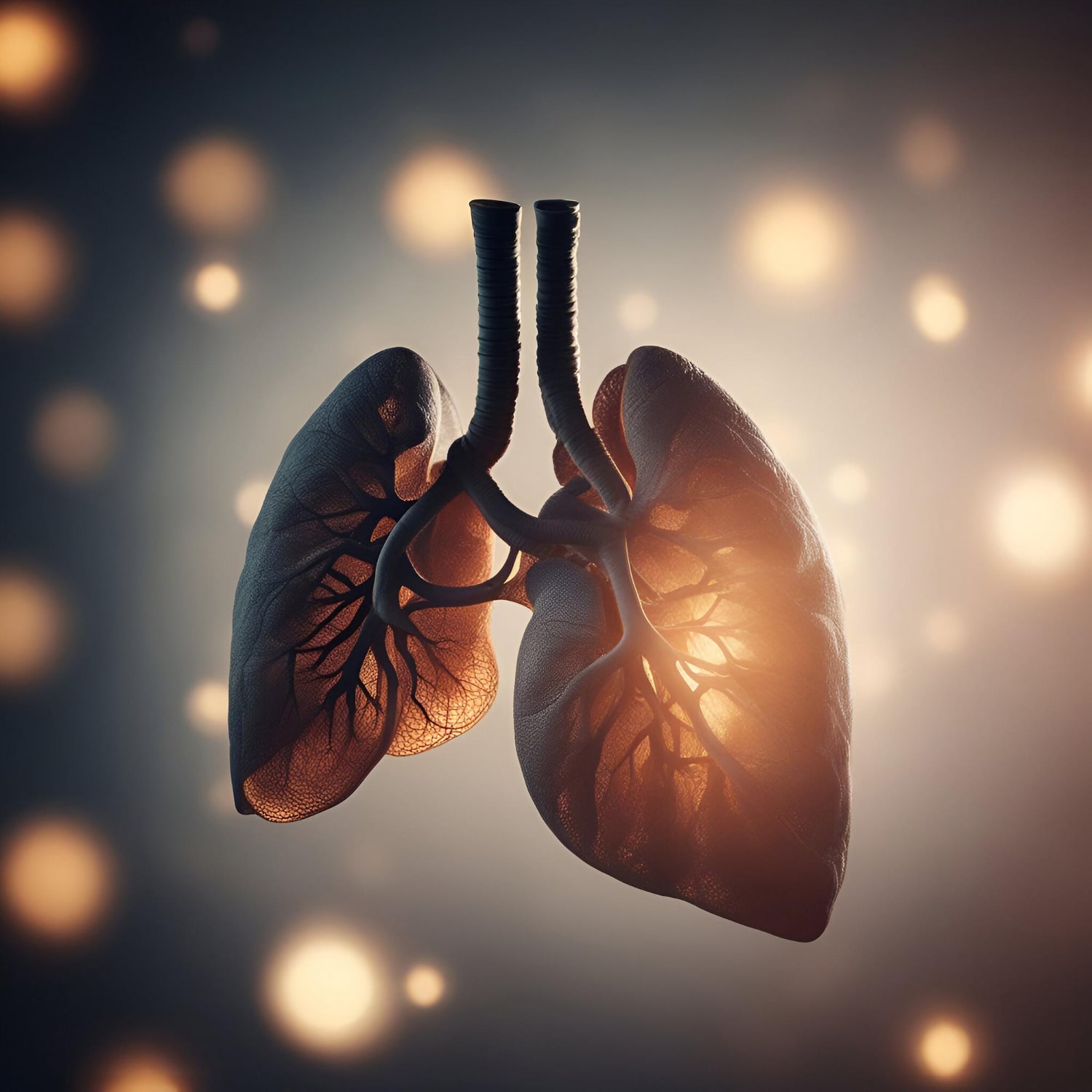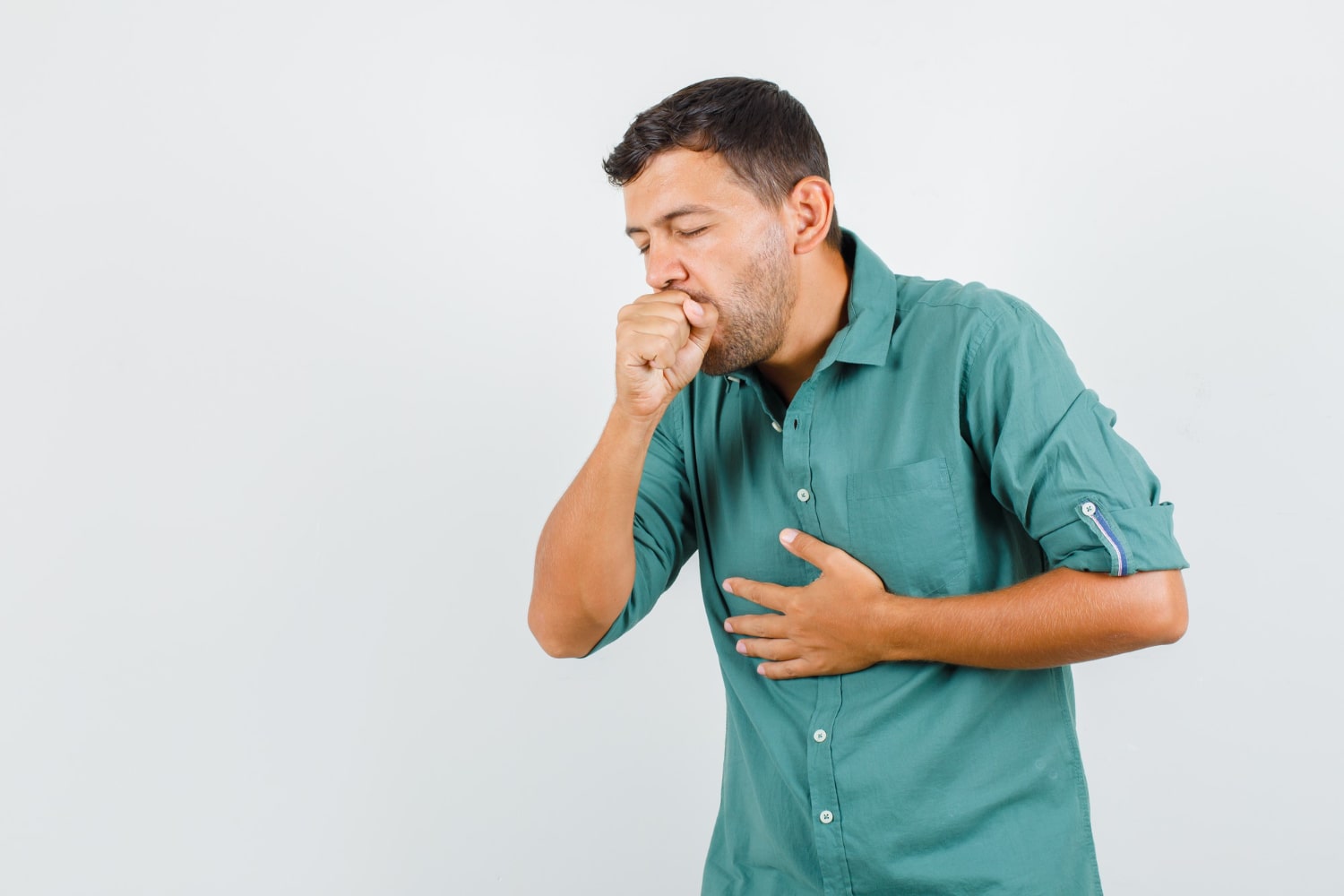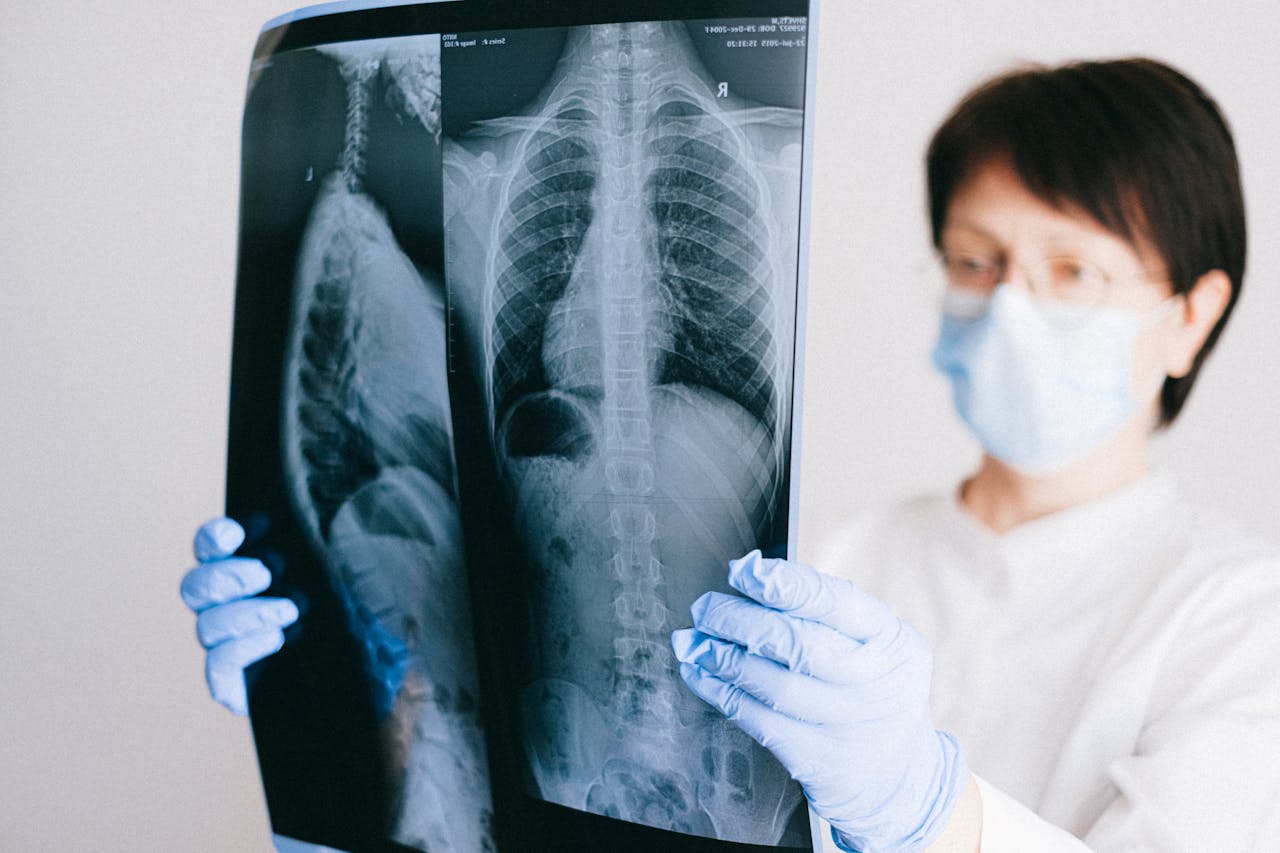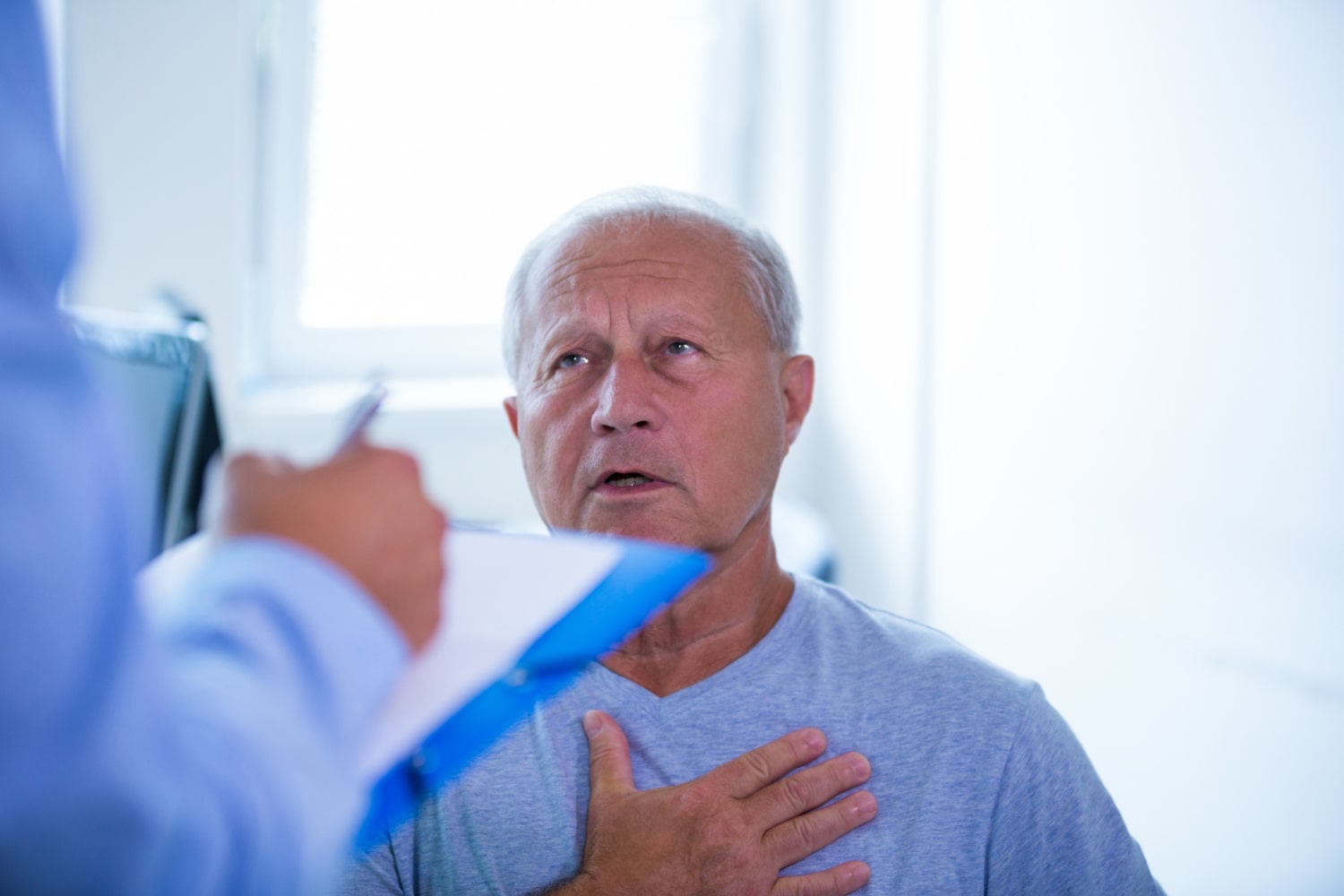The early symptoms of lung cancer include cough, chest pain, blood-streaked sputum, shortness of breath, and wheezing. These symptoms, seen in the early stages, are often challenging to notice.
As lung cancer progresses through its stages, the chances of treatment decrease. Early detection of lung cancer, which is the leading cause of cancer-related deaths worldwide, significantly increases the likelihood of successful treatment. For this reason, it is important to be informed about the early symptoms of lung cancer. So, what are the early signs of this cancer, which progresses silently and shows no significant symptoms in its initial stages?
What Is the First Symptom of Lung Cancer? 4 Early Symptoms of Lung Cancer

The primary cause of lung cancer is smoking. Other causes include genetic predisposition, air pollution, exposure to radon gas, and inhalation of harmful substances like asbestos.
The symptoms of lung cancer are similar in men and women. However, this type of cancer often shows no symptoms in the early stages. As a result, it progresses silently, and symptoms become more noticeable and severe as the disease advances. Here are the early symptoms of lung cancer:
1 – Cough
One of the first symptoms of lung cancer is a persistent cough that worsens over time. Tumors in the lung cells, which cause cancer, narrow the airways and hinder the easy expulsion of mucus.
This results in a persistent, severe, and unrelenting cough, which is the most noticeable symptom of lung cancer.
2 – Shortness of Breath and Wheezing
Tumor cells in the lungs block the airways, exert pressure on the lungs, and cause inflammation in the respiratory system. This makes breathing difficult, leading to shortness of breath in patients.
Additionally, a wheezing sound may be heard from the chest during breathing. Wheezing is one of the most common symptoms of lung cancer and occurs due to airway inflammation and blockage. Shortness of breath and wheezing, as early symptoms of lung cancer, may occur even during daily activities.
3 – Chest Pain
Tumors that press on the nerves can cause chest pain in patients. Chest pain, considered one of the early symptoms of lung cancer, is a characteristic sign of this cancer.
Particularly during coughing or breathing, pain in the chest area may indicate that cancer cells have started to spread beyond the lungs.
4 – Blood-Streaked Sputum
Blood-streaked sputum, which is among the early symptoms of lung cancer, accompanies coughing. This can be a significant warning sign of lung cancer. Patients experiencing blood-streaked sputum along with coughing should immediately consult a healthcare provider.
Symptoms of Stage 2 Lung Cancer
 The early symptoms of lung cancer may not always be noticed by patients. However, symptoms become more frequent and noticeable as the cancer progresses to stage 2. At this stage, cancer cells may have spread to lymph nodes in the lungs. Treatments such as chemotherapy or radiotherapy are effective for stage 2 lung cancer, which is still confined to the lungs. So, what are the symptoms at this stage?
The early symptoms of lung cancer may not always be noticed by patients. However, symptoms become more frequent and noticeable as the cancer progresses to stage 2. At this stage, cancer cells may have spread to lymph nodes in the lungs. Treatments such as chemotherapy or radiotherapy are effective for stage 2 lung cancer, which is still confined to the lungs. So, what are the symptoms at this stage?
- Cough
- Blood-streaked sputum
- Fatigue
- Chest pain
Symptoms of Stage 3 Lung Cancer
Stage 3 lung cancer is locally advanced and has spread to nearby areas of the chest and lymph nodes. At this stage, treatment may require a combination of radiotherapy, chemotherapy, and surgery. What are the symptoms of stage 3 lung cancer?
- Persistent cough
- Difficulty swallowing
- Severe chest pain
- Fatigue
- Weight loss
Symptoms of Stage 4 Lung Cancer
 The mild early symptoms of lung cancer intensify significantly in stage 4, as the cancer has metastasized to other parts of the body, such as bones, liver, and brain. In stage 4, treatment options are limited and focus on controlling the disease. What are the symptoms of stage 4 lung cancer?
The mild early symptoms of lung cancer intensify significantly in stage 4, as the cancer has metastasized to other parts of the body, such as bones, liver, and brain. In stage 4, treatment options are limited and focus on controlling the disease. What are the symptoms of stage 4 lung cancer?
- Severe shortness of breath
- Persistent fatigue
- Bone pain
- Loss of appetite
- Headaches
- Weight loss
For more detailed information about lung cancer nodules, its early symptoms, or how it is diagnosed, you should consult an experienced pulmonologist. Patients experiencing the mentioned symptoms can contact Prof. Dr. Semih Halezeroğlu for diagnosis and treatment.
Frequently Asked Questions
Here are some frequently asked questions about lung cancer, including its types and early symptoms:
1 – How Can Stage 1 Lung Cancer Be Detected?
Early-stage lung cancer, which has not spread to lymph nodes and is still under control, shows symptoms like shortness of breath, cough, wheezing, and blood-streaked sputum. Individuals with these symptoms should consult a pulmonologist for diagnostic tests to determine if they have lung cancer.
2 – What Are the 9 Subtle Symptoms of Lung Cancer?
Lung cancer often progresses silently, showing no significant symptoms initially. Here are 9 subtle symptoms of lung cancer:
- Cough
- Weight loss
- Loss of appetite
- Blood-streaked sputum
- Shoulder and chest pain
- Wheezing and shortness of breath
- Fatigue
- Persistent chest infections
- Hoarseness
3 – Where Does Lung Cancer Spread First?
Early-stage lung cancer remains under control, but as it progresses, it first spreads to tissues in the lungs and then to nearby lymph nodes. Later, it may metastasize to other organs, typically spreading through blood or lymphatic pathways.
4 – When Do Lung Cancer Symptoms Appear?
Early symptoms of lung cancer may not be noticeable or may be minimal. However, symptoms become more pronounced as the disease progresses.
Symptoms include persistent hoarseness, unrelenting cough, recurrent chest infections, shortness of breath, fatigue, wheezing, shoulder and chest pain, blood-streaked sputum, and weight loss. Even benign lung cancer lesions may exhibit these symptoms if they affect lung tissue and disrupt normal respiratory function.



